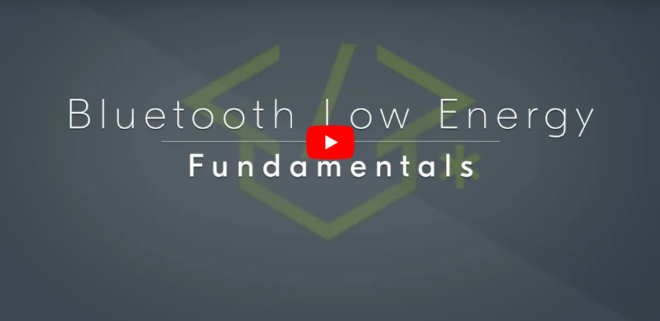Thanks to the dedication and hard work of the Bluetooth community, Bluetooth® technology is always expanding to include more features and device types in pursuit of our vision of a world without wires.
Next month, the Bluetooth Special Interest Group (SIG) will release a new version of the Bluetooth® Core Specification. Bluetooth® Core Specification version 6.0 includes new features and several feature enhancements, including Bluetooth® Channel Sounding, decision-based advertising filtering, monitoring advertisers, an enhancement to the Isochronous Adaptation Layer (ISOAL), the LL extended feature set, and a frame space update.
What’s New in Version 6.0
The outline below provides an overview of the new features and feature enhancements developers can expect to take advantage of when building with the new version of the Bluetooth Core Specification.

- Bluetooth® Channel Sounding: This innovation brings true distance awareness, introducing transformative benefits across various applications. The user experience of Find My solutions can be greatly improved, making it easier and faster to locate lost items. In digital key solutions, Bluetooth® Channel Sounding will add a robust layer of security, ensuring that only authorized users within a specified range can unlock doors or access secure areas. And, by infusing billions of everyday devices with true distance awareness, Bluetooth® Channel Sounding unlocks a world of possibilities for developers, freeing them to imagine and create innovative experiences that will continue to enhance our connection with our devices, one another, and the world around us.
- Decision-Based Advertising Filtering: The Bluetooth Low Energy (LE) Extended Advertising feature supports a series of related packets being transmitted on both primary and secondary radio channels. Decision-based advertising filtering allows a scanning device to use the content of a packet received on a primary advertising channel to decide if it should scan for related packets on the secondary channels, improving scanning efficiency by reducing the time spent scanning on secondary channels for packets that might not contain PDUs relevant to the application.
- Monitoring Advertisers: The host component of an observer device may instruct the Bluetooth LE controller to filter duplicate advertising packets. When filtering of this type is active, the host will only receive a single advertising packet from each unique device (subject to Bluetooth Core Specification definitions of what constitutes a unique device in this context). This improves efficiency for the host but has the disadvantage that the host has no way of knowing whether a device is still within range when circumstances dictate that the observer device should now attempt to connect to it. This can lead to the observer wasting energy performing high-duty cycle scanning for a previously discovered device that is no longer in range. The new monitoring advertisers feature uses Host Controller Interface (HCI) events to inform the host whenever a device of interest moves in and out of range.
- ISOAL Enhancement: The Isochronous Adaptation Layer (ISOAL) makes it possible for larger data frames to be transmitted in smaller link layer packets and ensures the associated timing information that is needed for the correct processing of the data by receivers can be reconstituted. ISOAL can produce either framed or unframed PDUs depending on certain variables. If framed PDUs are produced, latency can be increased as a result. In Bluetooth Core Specification version 6.0, ISOAL has been improved by defining a new framing mode that reduces latency for use cases that are particularly sensitive to this issue. The same feature also improves reliability.
- LL Extended Feature Set: With this advancement, devices can exchange information about the link-layer features that they each support. This capability has been enhanced to support larger numbers of features, which has become necessary as the sophistication and versatility of Bluetooth LE have grown.
- Frame Space Update: Prior versions of the Bluetooth Core Specification defined a constant value for the time that separates adjacent transmissions of packets in a connection event or connected isochronous stream (CIS) subevent. The value is designated T_IFS in the specification and had a fixed value of 150 µs. In version 6.0 of the Bluetooth Core Specification, frame spacing, as used in connections or with connected isochronous streams, is now negotiable and may be shorter or longer than 150 µs.
Feature Overview

Bluetooth Core Specification version 6.0 continues the trend for Bluetooth technology to be regularly updated with new features and technical improvements. Bluetooth Channel Sounding will enable a standards-based, secure approach to reliable and accurate distance measurement and many types of products will benefit; decision-based advertising filtering will improve throughput and reliability when using Bluetooth extended advertising for connectionless data transfer; monitoring advertisers will be useful to application developers and enable the provision of better user interfaces and an improved user experience; the improvements made to ISOAL will benefit audio applications for which low latency is important; and the LL extended feature set capability enables feature support discovery in the most sophisticated, feature-rich devices.
To learn more about the latest version of the Bluetooth Core Specification, check out the Bluetooth® Core Specification version 6.0 Feature Overview paper.
For more information on Bluetooth Channel Sounding, check out the Bluetooth® Channel Sounding: A Technical Overview paper.
![]()
FEATURED PAPER
Bluetooth® Core Specification Version 6.0 Feature Overview
This paper provides an overview of the latest version of the Bluetooth® Core Specification, which enables secure fine ranging between two Bluetooth devices.






























